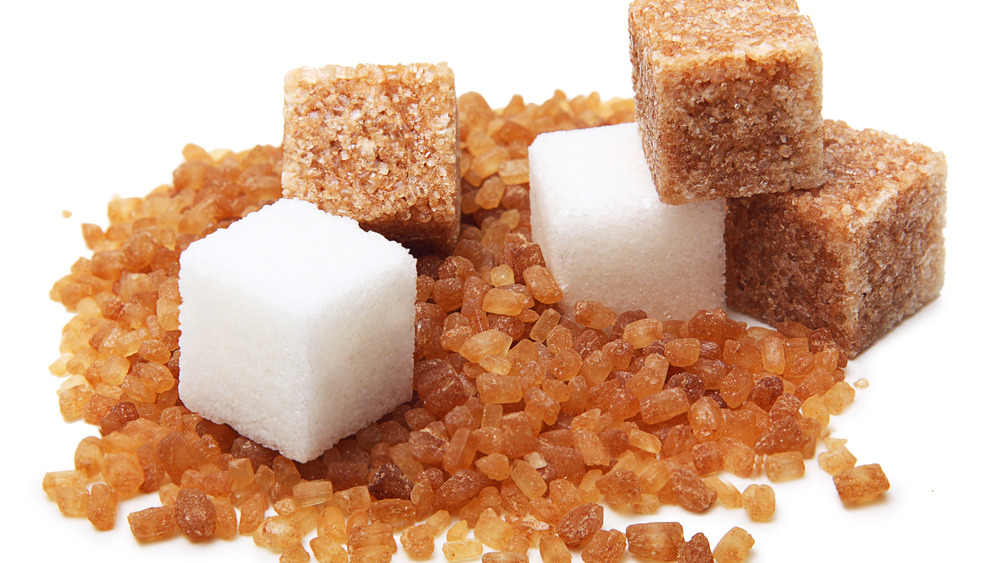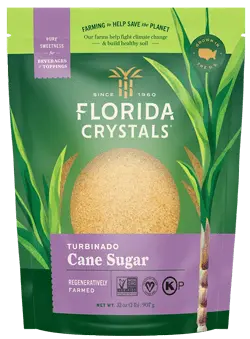Advanced Cane Sugar Processing: Enhancing Effectiveness and Sustainability
Wiki Article
An In-Depth Overview to the Environmental Effect and Sustainability Practices in Cane Sugar Processing
The environmental influence of walking cane sugar handling offers a complex array of challenges that warrant careful evaluation. From soil destruction and too much water usage to the carbon impact linked with growing and manufacturing, the effects of standard techniques are significant. What specific techniques can be executed to strike an equilibrium in between efficiency and ecological stewardship?Introduction of Walking Cane Sugar Handling
Walking cane sugar processing entails a series of systematic actions that change sugarcane right into polished sugar. Originally, harvested sugarcane is carried to refining centers, where it undergoes cleaning to get rid of dirt and particles. Following this, the walking cane is squashed to extract juice, which is after that made clear by eliminating impurities with heating and the enhancement of lime.The cleared up juice undertakes evaporation, where water is eliminated to concentrate the sugar web content. This concentrated syrup is then taken shape via cooling, allowing sugar crystals to develop. These crystals are divided from the staying syrup utilizing centrifugation, causing raw sugar. To achieve polished sugar, the raw product undertakes additional purification processes, which may include cleaning and filtering to remove continuing to be impurities and color.
The last item is then dried and packaged for circulation. Throughout this entire process, preserving efficiency and quality control is vital to make certain the sugar satisfies market requirements. Each action in walking stick sugar processing not only adds to the end product however additionally has ramifications for resource usage and waste generation, establishing the stage for discussions on sustainability and environmental influences connected with sugar production.
Environmental Challenges of Manufacturing
The manufacturing of walking cane sugar offers a number of significant environmental difficulties that warrant focus. One main issue is the considerable usage of agrochemicals, including plant foods and chemicals, which can cause dirt degradation, biodiversity loss, and contamination of local water sources. The overflow from sugarcane fields frequently brings these chemicals into nearby ecological communities, disrupting aquatic life and affecting the wellness of areas reliant on these water bodies.One more obstacle is the high power usage connected with sugarcane processing. The boiling and refining stages call for significant warmth, primarily created by burning fossil gas, adding to greenhouse gas emissions. Additionally, the expansive acreage required for sugarcane cultivation can bring about logging and environment damage, more aggravating climate modification and threatening wildlife.
Furthermore, the labor practices in some regions increase ethical issues, as employees may deal with bad working conditions and inadequate incomes. This scenario usually continues a cycle of hardship in neighborhood neighborhoods. Cane Sugar Processing. Attending to these ecological challenges is vital for creating more sustainable practices in walking cane sugar production, inevitably profiting both the environment and the communities involved in this sector
Water and Land Usage Effect
Water sources and land utilization are important elements in the walking stick sugar market that considerably affect the setting. The growing of sugarcane needs considerable water input, with price quotes suggesting that it can eat up to 2,000 litres of water per kilo of sugar created. This intensive use of water usually results in exhaustion of local water resources, impacting not just the sugarcane plantations but likewise surrounding communities and neighborhoods that rely upon the same water sources for agriculture and domestic use.
Additionally, land usage for sugarcane farming can bring about logging and the conversion of all-natural habitats right into monoculture plantations. This practice decreases biodiversity, interrupts neighborhood ecological communities, and adds to soil degradation. The expansion of sugarcane areas frequently trespasses on important agricultural land, producing competitors for sources in between food and biofuel production.
Sustainable practices, such as optimizing irrigation strategies and applying plant Read More Here rotation, are important to mitigate these impacts. By taking on more reliable water use and land management approaches, the walking cane sugar industry can lower its environmental footprint, guaranteeing an equilibrium in between farming efficiency and ecological preservation.
Greenhouse Gas Emissions
Greenhouse gas discharges represent a substantial ecological issue within the walking stick sugar processing sector, especially as agricultural techniques expand to fulfill worldwide need. The farming of sugarcane, a crop that thrives in exotic climates, relies heavily on artificial plant foods and chemicals, which contribute to laughing gas discharges. Additionally, land-use adjustments, including logging for new sugarcane haciendas, launch co2 stored in plant life and soil.Throughout processing, energy consumption is one more major source of greenhouse gas discharges - Cane Sugar Processing. Many sugar mills make use of nonrenewable fuel sources to power machinery and produce warm, resulting in significant carbon footprints. Moreover, the transport of raw sugarcane and completed items includes layers of exhausts via fuel combustion in cars
The cumulative effect of these emissions exacerbates environment adjustment, posing risks not just to the setting however likewise to the long-term feasibility of the sector. Stakeholders have to acknowledge the urgent need for comprehensive strategies that resolve these exhausts. This entails examining current agricultural practices, processing approaches, and transportation systems to identify locations for renovation and reduction. Resolving greenhouse gas discharges is necessary for promoting a much more sustainable cane sugar sector in a transforming climate.

Lasting Practices and Innovations
Lasting techniques and advancements are increasingly important in the walking stick sugar handling industry as stakeholders look for to minimize ecological influences while maintaining performance. One significant improvement is the application of integrated plant administration, which optimizes source use by incorporating soil administration, pest control, and plant rotation methods. This approach improves return while minimizing chemical inputs and maintaining soil wellness.Furthermore, the fostering of renewable resource sources, such as biomass from sugarcane residues, has actually gained traction - Cane Sugar Processing. By transforming waste products into power, refining facilities can minimize their reliance on fossil fuels, therefore lowering greenhouse gas discharges
Water monitoring practices have likewise seen improvements with the recycling and reusing of water in handling Our site plants, significantly minimizing freshwater intake. Developments in innovation, such as accuracy farming, enable farmers to keep track of crop wellness and source usage better, ensuring sustainable cultivation methods.
Moreover, qualification programs like Fair Trade and Jungle Partnership urge eco responsible farming practices and promote social equity within the supply chain. By embracing these sustainable methods and developments, the walking stick sugar processing market can boost its strength and add favorably to ecological stewardship.
Final Thought
The ecological effect of walking stick sugar processing presents significant challenges, including dirt destruction, high water intake, and greenhouse gas exhausts, together with honest issues associated to labor practices. Dealing with these issues via lasting methods, such as integrated crop management, eco-friendly power adoption, and water recycling, is vital. By promoting socially fair and ecologically responsible methods in sugar manufacturing, the market can dig this reduce its adverse results, making certain an extra sustainable future for both communities and communities included in this industry.Cane sugar handling involves a collection of methodical steps that change sugarcane into polished sugar. Each step in walking cane sugar processing not only adds to the final item however also has ramifications for resource usage and waste generation, setting the phase for discussions on sustainability and ecological impacts linked with sugar production.
Greenhouse gas exhausts represent a substantial environmental problem within the walking stick sugar handling market, specifically as farming techniques expand to satisfy global need.Lasting methods and innovations are progressively essential in the walking stick sugar handling industry as stakeholders seek to lower environmental effects while keeping efficiency.The ecological impact of walking stick sugar handling presents considerable obstacles, including soil deterioration, high water intake, and greenhouse gas emissions, together with moral problems related to labor methods.
Report this wiki page